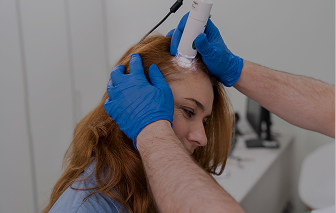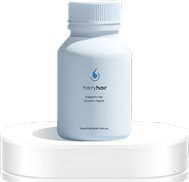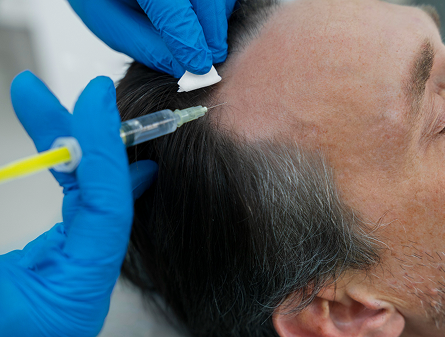Low-level laser therapy (LLLT) exposes the skin to wavelengths of light in the “near-infrared” and red side of the visible light spectrum. This can stimulate the stem cells on the scalp causing hair to grow. Dutasteride is a treatment for pattern hair loss that works as a dihydrotestosterone (DHT) blocker.
By lowering the levels of DHT in the body, fewer hairs are subjected to miniaturisation causing them to become weak and fall out meaning healthy hair has a chance to grow. LLLT is a non-invasive treatment that can be performed at home or in a clinic.
Dutasteride is a pharmaceutical treatment that can be taken at home and requires daily intake to be effective. Explore the comparison table below to see if LLLT or dutasteride are right for you.
- Laser therapy is a non-invasive treatment using low-level red light to stimulate follicles and scalp circulation.
- Unlike dutasteride, it is drug-free and safe for both men and women.
- Dutasteride is a prescription oral medication that blocks type I, II, and III 5-alpha reductase to reduce DHT.
- Compared to laser therapy, it’s more potent but only approved for male use and has systemic effects.
- Laser devices cost between $300–$1000, offering a one-off investment.
- While more expensive upfront than dutasteride, long-term use may be cheaper overall.
- Dutasteride is prescription-only in Australia and costs approximately $40–$80 monthly.
- Unlike laser therapy, it requires continuous purchase and doctor consultation.
- Laser therapy requires 15–30 minute sessions, 3–5 times per week.
- Consistent use is necessary to maintain visible benefits.
- Dutasteride is taken once daily, with effects usually appearing after 3–6 months.
- Compared to laser therapy, it’s less time-intensive but still requires ongoing commitment.
- Laser therapy externally applies light to the scalp, enhancing cellular activity without physical contact.
- Does not affect hormones or internal systems.
- Dutasteride inhibits the hormonal conversion of testosterone to DHT, lowering levels throughout the body.
- Unlike laser therapy, it acts internally and affects the endocrine system.
- Laser therapy has minimal known side effects, even with long-term use.
- Safer for users, avoiding drug-related risks.
- Dutasteride can cause sexual side effects, depression, or fatigue in a small percentage of users.
- Compared to laser therapy, it carries higher systemic risks.
- Laser therapy requires routine sessions using a specialised device.
- Less convenient than a daily pill, but some users prefer its non-pharmaceutical nature.
- Dutasteride is taken as a single pill each day.
- Unlike laser therapy, it fits easily into daily routines without needing equipment.
- Laser devices are sold online and require no prescription.
- More accessible for users looking for over-the-counter options.
- Dutasteride is available only through a prescription and is used off-label for hair loss in Australia.
- Less accessible than laser therapy due to regulatory control.
- Dutasteride is available only through a prescription and is used off-label for hair loss in Australia.
- Less accessible than laser therapy due to regulatory control.
- Dutasteride offers durable results, but hair loss may return if stopped abruptly.
- Compared to laser therapy, the effects last longer after discontinuing in some users.
- Laser therapy is compatible with minoxidil, finasteride, and hair transplants.
- Often used as a supportive therapy that won’t cause interference with other treatments.
- Dutasteride is sometimes combined with topical minoxidil for enhanced results.
- Unlike laser therapy, it must be managed carefully due to its hormonal effects.
- Laser therapy appeals to those who prefer drug-free, tech-based treatments.
- It’s seen as modern and low-risk.
- Dutasteride appeals to those seeking a powerful, proven approach for hormone-driven hair loss.
- Unlike laser therapy, it offers intense internal action and has clinical backing.
- Laser therapy supports scalp health and follicle activation without systemic influence.
- It’s ideal for maintaining hair quality and preventing early thinning.
- Dutasteride directly tackles the hormonal cause of male pattern hair loss by suppressing DHT.
- Compared to laser therapy, it does not directly benefit scalp health.
- Laser therapy produces very little waste over time due to reusable equipment.
- More environmentally sustainable than treatments involving consumables.
- Dutasteride contributes to ongoing pharmaceutical waste from packaging and prescriptions.
- Less eco-friendly compared to laser devices with long-term use.
Shop our hair solutions
We are committed to providing affordable hair regeneration services for people all over Australia. Our formula can help you regain your confidence.
Shop Now

Laser Therapy vs Dutasteride Effectiveness Comparison Summary
The cost of LLLT clinical sessions may be higher compared to a dutasteride prescription. This is because LLLT sessions need to be maintained regularly to enjoy results. At-home LLLT devices are available but range in quality and price. This can offset the cost but they also require daily use to see changes.
Dutasteride may be acquired at a lower monthly cost but is designed to be a long-term treatment so costs can add up over time. Moreover, since dutasteride has not been approved as a treatment for hair loss outside of Japan and South Korea, it can only be prescribed off-label meaning it can be harder to access. LLLT is more accessible since a device can be ordered online from a range of manufacturers.
LLLT is intended to be more of a short-term treatment for hair loss. Dutasteride comes with systemic side effects relating to sexual dysfunction including erectile dysfunction, loss of libido and ejaculation issues. LLLT has comparatively few side effects with most patients not reporting any negative impact. Those who did experience side effects noticed itching, acne, and scalp sensitivity.
User Guidance
LLLT is a good option if you are looking for a non-invasive and non-pharmaceutical treatment with a low risk of side effects. It can also be combined with other low-risk treatments like pulsed electromagnetic field (PEMF) therapy to stimulate follicles on your scalp in different ways.
Dutasteride is best suited for people who have tried other DHT blockers like finasteride but have not seen any improvements. Dutasteride is a more potent solution that blocks all three types of isoenzymes responsible for the conversion of testosterone into DHT. In comparison, finasteride only blocks two types, one of which is not a common cause of hair loss on the scalp.
Take Our Hair Loss Quiz to See Which Treatment Suits You?
Take A Hair Quiz

Frequently Asked Questions
We have put some commonly asked questions.
Nunc scelerisque tincidunt elit. Vestibulum non mi ipsum. Cras pretium suscipit tellus sit amet aliquet. Vestibulum maximus lacinia massa nontor.
Platelet-rich plasma (PRP) treatment involves drawing blood from the patient, isolating the beneficial nutrients and injecting it into the scalp where hair loss is occurring. This promotes hair growth and has many other applications from encouraging healing to skin rejuvenation.
Platelet-rich plasma (PRP) treatment involves drawing blood from the patient, isolating the beneficial nutrients and injecting it into the scalp where hair loss is occurring. This promotes hair growth and has many other applications from encouraging healing to skin rejuvenation.
Platelet-rich plasma (PRP) treatment involves drawing blood from the patient, isolating the beneficial nutrients and injecting it into the scalp where hair loss is occurring. This promotes hair growth and has many other applications from encouraging healing to skin rejuvenation.







 See All
See All